Senegalese Food Dishes: Basic Overview
Common Ingredients
Common Cooking Methods
Courses
Meals
Key Taste
Eating Etiquette
Meal Presentation
Culinary Festivals
Influence and Fusion
Popular Types of Senegalese Dishes
-
Stews
In Senegal, stews are hearty, flavorful dishes that often combine meat or fish with vegetables and a rich sauce simmered to perfection.
They are a staple of Senegalese cuisine, often blending local ingredients and spices.
-
Desserts
Senegalese desserts range from sweet, creamy treats to fruit-based delights.
These desserts often incorporate local ingredients.
-
Snacks
Snacks in Senegal are diverse, including both savory options and sweet treats.
They are enjoyed throughout the day.
-
Grilled and Barbecued Dishes
Grilled and barbecued dishes are central to Senegalese cuisine, providing a smoky profile to the meat.
Senegalese dishes are a large collection of specialties in Senegal, a country in West Africa. These dishes make use of various local ingredients, such as grains, fish, chicken, lamb, and vegetables.
But what makes dishes in Senegal truly special is their rich fusion of ethnic traditions and external influences, notably French delicacies, Portuguese specialties, and North African culinary practices.
The preparation methods often involve slow-cooking techniques to blend flavors deeply and create hearty and aromatic dishes. Rice serves as a staple in many meals, providing the foundation for rich, flavorful sauces and stews.
Senegalese cooking also showcases a preference for combining sweet, savory, and spicy elements, achieving a balance that is both unique and inviting. Fermentation is another key aspect used in both food and drink to add depth and complexity.
After getting used to Senegalese dishes, make sure to learn about the perfect pairings with beverages that take your experience to a whole new level.
21 Popular Senegalese Dishes
Get to know about the specialties of Senegal by taking a look at the dishes through the website’s filter system, giving you a chance to see them in alphabetical order, tastes, dish types, ingredients, cooking techniques, and global popularity.
Later on, spend some time to see the most popular, traditional, national, street food, and fusion specialties of Senegal:
Firire
- Street Food
- Traditional
Firire, also known as yassa fish, is a popular Senegalese fish specialty featuring fish marinated in a mixture of lemon juice, onions, and spices, then fried until golden and crispy.
It is often served with onions and a variety of vegetables, adding a tangy and savory flavor profile. Thanks to the river system and long coastline, the types of fish used for this dish are relatively diverse.
Often, locals will fry the fish until crispy and serve it as a whole with bread, a signature onion sauce, or compote (to balance the flavors).
Chicken Yassa
- Traditional
Chicken yassa is a renowned Senegalese dish that mainly revolves around the chicken with onions and lemon. This culinary delight begins with chicken pieces marinated in a mixture of lemon juice, vinegar, and spices, then grilled or fried.
The chicken is then simmered in a rich sauce made from the marinade, abundant with caramelized onions and often a hint of chili for heat. Chicken yassa is typically served over a bed of fragrant rice.
The dish is a balance of tangy, savory, and slightly spicy flavors. Chicken aside, people even use lamb and fish to make the yassa.
Soupou Kandia
- Traditional
Soupou kandia, also known as okra soup, is a hearty and rich stew in Senegal and Gambia. This vibrant dish is a combination of palm oil, creating a vivid red color and unique flavor.
The soup brings together okra, meat (often lamb, beef, or fish), and sometimes seafood, all simmered together with vegetables and a blend of spices. The okra contributes not only its flavor but also a characteristic viscous texture to the soup.
Great for serving with rice, people even use options like bread to accompany soupou kandia.
Thiéboudienne
- National
- Traditional
Thiéboudienne (rice of fish) is a national dish of Senegal featuring fish and rice. The delicacy also originates from Senegal and is prevalent in other countries, where its name is “diolof rice”.
This dish is a savory concoction of fish, rice, and vegetables, all cooked together with a tomato-based sauce and a rich blend of herbs and spices. Ideally, people will deep-fry the fish for a crispy texture.
Akara
- Street Food
Akara is a West African fritter often enjoyed as a street snack in Senegal and Nigeria. The dish is made primarily from black-eyed peas or beans, which are blended into a paste, seasoned with onions and spices, and then deep-fried.
This snack is enjoyed at various times of the day, often served for breakfast alongside porridge or eaten as a street food snack. It can also be accompanied by a spicy dipping sauce or stuffed in bread to make a sandwich.
Dibi
- Street Food
Dibi, or Senegalese grilled lamb, is a Senegal’s fast-food specialty with lamb meat cut into small pieces and served with some mustard, pepper, onion, and bread.
Dibi is often made and sold by street vendors or small eateries (which are usually called “dibiterie”) in Dakar. Usually, the meat needs to be well-marinated and processed in a particular way to offer an exquisite aroma.
Furthermore, a special onion sauce, diaga (includes onions, diced carrots, tomato paste, and other things), is the most frequently used sauce to pair with Dibi.
Thiébou Yapp
- Traditional
Thiébou Yapp is a Senegalese yapp dish that swaps out fish for meat to create something similar to a meat stew.
Also called ceebu yapp, the meat included in it is usually lamb or beef. As for the veggies, options are diverse, with choices like carrots, cabbage, and sometimes sweet potatoes or cassava.
Yassa
- Traditional
Yassa is a word that generally refers to a spicy Senegalese treat cooked with meticulously marinated proteins, caramelized onion, and smoked paprika.
The poulet version of the dish is a famous chicken yassa in Casamance, a Southeast region of Senegal. Some other ingredients of this dish are vinegar, peanut oil, chicken bouillon, and some condiments to taste.
Rice is often used as the bland base for yassa, and it helps a lot in harmonizing the overall flavors.
Vermicelle Poulet
- Fusion
Vermicelle poulet is an inventive twist on the traditional Senegalese yassa poulet, substituting rice with vermicelli.
At its core, this dish features chicken, or sometimes lamb, paired with lightly broken vermicelli noodles. Due to its ease of preparation, vermicelle poulet has become a favored choice for gatherings or significant celebrations like baptisms and weddings.
Maafe
- Traditional
Maafe is a special delicacy in Senegal and Mali, including white rice or couscous, and a distinctive peanut butter sauce. The meat used to accompany the rich peanut butter sauce is usually lamb or beef.
Additionally, the stew even comes loaded with vegetables like sweet potatoes, carrots, and cabbage. The dish is characterized by its unique combination of flavors—savory, slightly sweet, and nutty, with a comforting, creamy texture.
Dakhine
- Traditional
Dakhine is a traditional Senegalese stew with a base of ground peanuts, meat, and rice, creating a distinctive, creamy texture. Often, it includes fish or meat, which is cooked alongside various.
Dakhine stands out for its combination of nuttiness from the peanuts and the wholesome, earthy flavor of millet.
Thiakry
- Traditional
Thiakry, or dengue, is a traditional West African dessert, particularly popular in Senegal, Mali, and Ivory Coast. The dish is made from millet or couscous grains that are fermented before mixing with sweetened milk, yogurt, or sour cream.
When serving, thiakry boasts a creamy texture, similar to pudding. The dish is often flavored with vanilla, nutmeg, or cinnamon and sweetened with sugar or honey.
Yogurt or sweetened condensed milk are the best pairs with this food. Also, people even add raisins, nuts, or dates to customize the flavors.
Sombi
- Traditional
Sombi is a Senegalese dessert pudding often served as a light breakfast while it’s still warm. The natural starch from rice combined with the thick coconut cream creates a slightly dense consistency.
This food can also be served cool on hot days. Plus, dried coconut chips will also be added to enhance the crispiness of the delicacy.
Pastels
- Street Food
Pastels are affordable street food found in almost every street of Senegal. The deep-fried fritter is also frequently sold as an after-school snack with spicy pepper or tomato sauce.
In terms of filling, these fritters are full of flavorful meat and vegetables stuffed inside of thin dough. When served, pastels go best with a sweet and sour tomato sauce.
Ngalakh
- Traditional
Ngalakh is a thick dessert of Senegal often enjoyed during the Easter celebrations within the Christian communities. The treat is a creamy, sweet millet porridge or couscous, mixed with peanut butter and sweetened with sugar.
The dish is enriched with baobab fruit powder, which adds a unique tartness. Ngalakh is often flavored with vanilla or orange flower water, contributing to its distinctive taste.
Cinq Centimes
- Traditional
Cinq centimes is a French word meaning “Biscuits Five Cents” or “Five Cents Cookies”, a popular treat in Senegal. The delicious peanut butter cookies have a small round shape about the same size as French’s five cents coins.
This well-loved Senegalese treat was first documented by George Washington Carver, an African-American agricultural scientist in the 1930s.
Banana Glacé
- Traditional
Banana glacé, also known by the name mamadou’s banana glacé, is a cold dessert containing long strips of banana and mashed bananas mixed with other sweet condiments.
This treat highlights the natural sweetness and creamy texture of bananas, enhancing them with a shiny, sweet outer layer.
After the bananas are coated in this syrup, they are allowed to cool, resulting in a fruity dessert with the crispiness of the sugary glaze.
Footi
- Traditional
Footi is a savory sauce in Senegal, often used for pairing with rice or meat dishes. Often, this thick sauce combines kidney beans, onions, tomato sauce, and eggplants.
Once simmered together, all the elements meld together to produce a thick, stew-like consistency.
Bassi-Salté
- Traditional
Bassi-salté is a traditional Senegalese meal that brings together sweet and salty flavors. The specialty also contains various nutrients, especially protein coming from meat (mutton meatballs or diaguas, chicken pieces).
Furthermore, Senegalese people also include a healthy carbohydrate source from cassava.
Ndambé
- Traditional
Ndambé is a stew in Senegal consisting of beans (often black-eyed peas or red beans), onions, garlic, and spices, cooked with either fish or meat.
The stew is distinguished by its thick, savory sauce and is commonly served over rice or with bread, making it a filling meal that combines protein, fiber, and a range of flavors.
Mabakhalou Saloum
- Traditional
Mabakhalou Saloum is a cherished traditional dish from the Saloum region of western Senegal. The delicacy incorporates a rich blend of ingredients, including dried fish, various seafood, cowpeas, and peanuts.
The dish is served over rice and generously dusted with peanut powder, enhancing its flavor.
What Is the History of Senegalese Food?
Senegalese cuisine has been shaped by various factors over the centuries, including indigenous practices, colonial history, and interactions with neighboring countries. Here are the key historical points:
Don’t forget, that you can always elevate the flavors of Senegal’s dishes by pairing them with tasty beverages.
What Senegalese Dishes to Pair with Beverages?
By pairing Senegalese dishes with beverages, you’re certain to savor the fullest of what Senegalese dishes have to offer. For that, here are some combos to try out:
In addition, there are many beverages in Africa that make excellent accompaniments for Senegalese dishes. From traditional liquors and beers to fruit juices and herbal teas, you won’t be disappointed with their diversity.
Do my Senegalese food suggestions excite your curiosity? Don’t forget to drop your comments on those dishes and share them with others looking to know more about the dishes of Senegal.















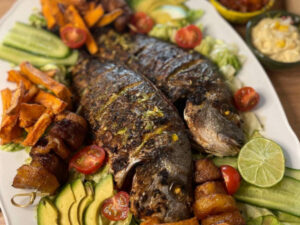
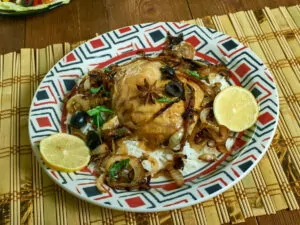
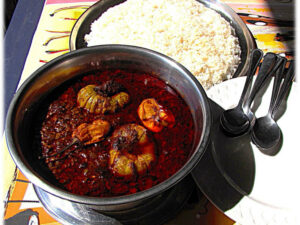
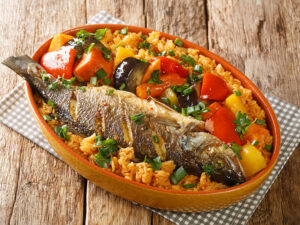

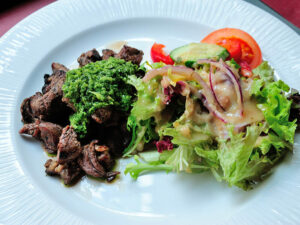
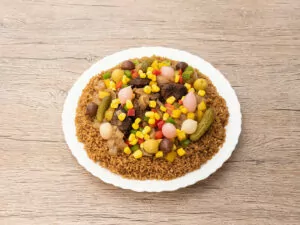
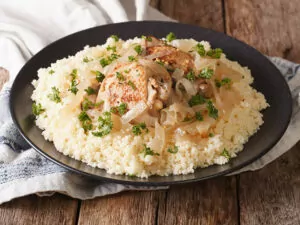
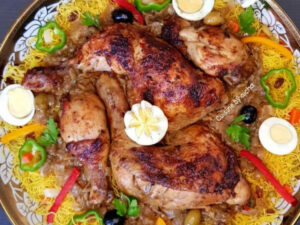
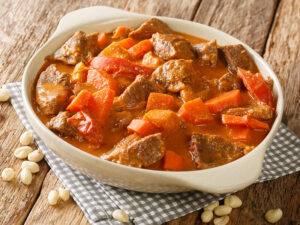
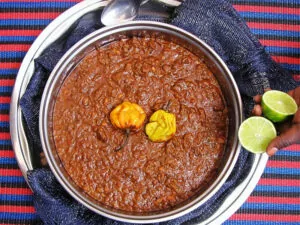
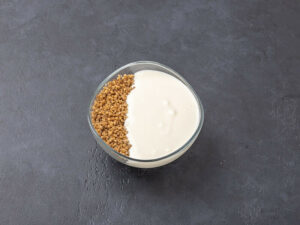
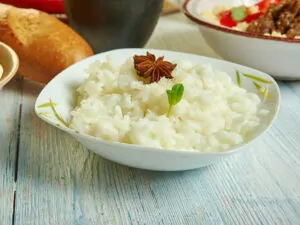
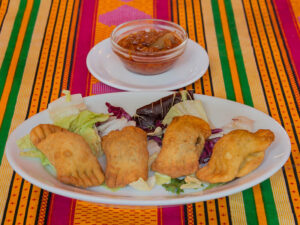
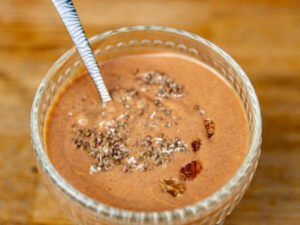


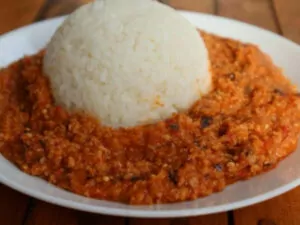
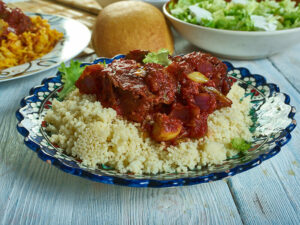
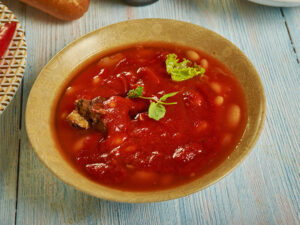
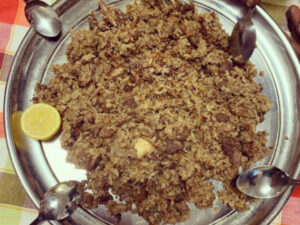

Jamie Scott
Editor in Chief, Senior Content Writer
Expertise
Home Cooking, Meal Planning, Recipe Development, Baking and Pastry, Food Editor, Cooking-video Maker, Western Food Evaluation Expert
Education
Le Cordon Bleu College of Culinary Arts
Local Community College, New York, NY
Jamie Scott is a skilled culinary expert and content creator specializing in Western cuisine. With over 15 years in the culinary field and formal training from Le Cordon Bleu, Paris, Jamie deeply understands how to blend nutrition with delicious flavors. His passion for cooking matches his commitment to making healthy eating accessible and enjoyable.
On Fifteen.net, Jamie brings a fresh perspective to classic dishes and beverages, offering readers insightful recipes, cooking tips, and a fresh view on meal planning that emphasizes taste, health, and simplicity.